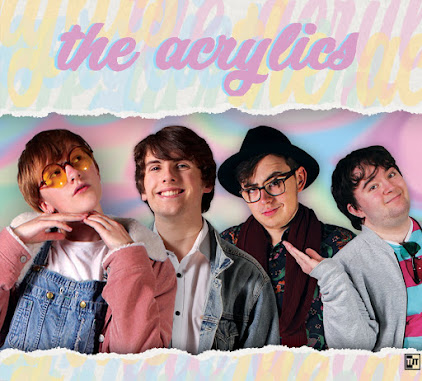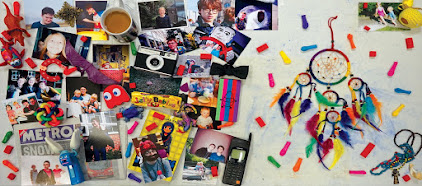A clip from 'Pirates of the Caribbean: On Stranger Tides.' Click to play.
This clip creates and maintains continuity in a few ways. One key way it does this is use of the 180 degree rule- the line of vision between the two characters who are most involved in the conversation (Blackbeard and Captain Jack Sparrow) is never crossed by a camera, even when one of them turns his back to the camera. In fact, the only times the rule is ever 'broken' is between scenes, i.e. at the beginning of the clip the camera is on one side of the cameras, without breaking the 180 degree rule, and then when the pistols are introduced after a jump cut the camera has a new line of vision and thus a new 180 degrees to follow, foregoing the old one. This happens only a few minor times in the clip, in the sequence already mentioned and in the last moments of the clip when the Quartermaster walks away from the group and when Sparrow jumps over the cliff, however both scenes are far removed enough from the main conversation that it doesn't feel like the rule is really broken.
Another rule that the camera follows is the 30 degree rule. The only jump cut in the clip is used to signify the passage of time as the pistols are brought out, and even with the camera moving all around the forest clearing it stays angled within a 30 degree radius and thus manages to preserve continuity and make the whole scene flow, despite the changing focus between characters. This is complimented by the use of Shot/Reverse/Shot, which is seen when the camera is behind Blackbeard's shoulder when he is interacting with another character, but behind the other character's shoulder (or at least next to them) when they are interacting with him. This gives the impression of a dialogue and improves flow between the characters. Another feature of SRS is a master shot to establish the scene- the master shot for this scene, just before the camera starts doing the aforementioned over-the-shoulder shots, is when the pistols come out- the camera starts on a close-up and zooms out, revealing all the important characters and where they are in relation to each other. This spatial awareness really improves the effect of SRS when creating the dialogue.
Match-on action and soundbridges are used in this clip to preserve continuity also, often hand-in-hand. A good example would be when Sparrow picks up one of the guns; half-way through the motion of lifting it the angle changes, but he keeps moving seamlessly between the shots and the sound of the gun clicking as he grabs and moves it bridges the shots too. Another time this happens is when the doll is thrown off the cliff- the Quartermaster throws it in a long-shot, but then the perspective changes to a low-angle very-long-shot looking up at him, so that the doll falls 'through' the camera. When this fairly drastic camera shift happens, we see the Quartermaster's hand still raised from the throw in the previous shot, and the doll's arc flows quite nicely between the shots, avoiding looking jumpy and preserving continuity. A nice bonus is that Sparrow starts screaming off-camera as the doll falls, and the very next shot the camera cuts to him screaming on-camera with the sound bridging the shots.
In this same scene another continuity technique is used- a correct shot order. To preserve continuity, shots shouldn't go from close-up to long or vice versa as this looks jumpy, and this clip follows this guide. In the doll scene, this order is followed in a more dynamic way, as since the doll falls from up high down 'through' the camera, the focus effectively goes from long to mid to close without the camera moving, and the next shot of Sparrow screaming is also a close-up. Thus, despite the doll shot being framed as long and wide, due to the movement of the doll when it cuts to Sparrow it doesn't look unnatural. Finally, a few small details are followed through the whole clip to improve continuity. One is that all the characters have an eye-line match, and always appear to be looking in other character's eyes even when they are off camera and despite height differences. Another is that props and costumes stay consistent, as in the scene where Sparrow fires a gun into the air, which is immediately followed by a mid-close-up which obscures the hand holding the gun. Then, we see his hand again, not holding the gun, but it's actually all ok as during the shot the audience can hear the sound of something hitting the ground, which is an ellipse (i.e. something the audience naturally fill in for themselves) of him dropping the gun.
Another rule that the camera follows is the 30 degree rule. The only jump cut in the clip is used to signify the passage of time as the pistols are brought out, and even with the camera moving all around the forest clearing it stays angled within a 30 degree radius and thus manages to preserve continuity and make the whole scene flow, despite the changing focus between characters. This is complimented by the use of Shot/Reverse/Shot, which is seen when the camera is behind Blackbeard's shoulder when he is interacting with another character, but behind the other character's shoulder (or at least next to them) when they are interacting with him. This gives the impression of a dialogue and improves flow between the characters. Another feature of SRS is a master shot to establish the scene- the master shot for this scene, just before the camera starts doing the aforementioned over-the-shoulder shots, is when the pistols come out- the camera starts on a close-up and zooms out, revealing all the important characters and where they are in relation to each other. This spatial awareness really improves the effect of SRS when creating the dialogue.
Match-on action and soundbridges are used in this clip to preserve continuity also, often hand-in-hand. A good example would be when Sparrow picks up one of the guns; half-way through the motion of lifting it the angle changes, but he keeps moving seamlessly between the shots and the sound of the gun clicking as he grabs and moves it bridges the shots too. Another time this happens is when the doll is thrown off the cliff- the Quartermaster throws it in a long-shot, but then the perspective changes to a low-angle very-long-shot looking up at him, so that the doll falls 'through' the camera. When this fairly drastic camera shift happens, we see the Quartermaster's hand still raised from the throw in the previous shot, and the doll's arc flows quite nicely between the shots, avoiding looking jumpy and preserving continuity. A nice bonus is that Sparrow starts screaming off-camera as the doll falls, and the very next shot the camera cuts to him screaming on-camera with the sound bridging the shots.
In this same scene another continuity technique is used- a correct shot order. To preserve continuity, shots shouldn't go from close-up to long or vice versa as this looks jumpy, and this clip follows this guide. In the doll scene, this order is followed in a more dynamic way, as since the doll falls from up high down 'through' the camera, the focus effectively goes from long to mid to close without the camera moving, and the next shot of Sparrow screaming is also a close-up. Thus, despite the doll shot being framed as long and wide, due to the movement of the doll when it cuts to Sparrow it doesn't look unnatural. Finally, a few small details are followed through the whole clip to improve continuity. One is that all the characters have an eye-line match, and always appear to be looking in other character's eyes even when they are off camera and despite height differences. Another is that props and costumes stay consistent, as in the scene where Sparrow fires a gun into the air, which is immediately followed by a mid-close-up which obscures the hand holding the gun. Then, we see his hand again, not holding the gun, but it's actually all ok as during the shot the audience can hear the sound of something hitting the ground, which is an ellipse (i.e. something the audience naturally fill in for themselves) of him dropping the gun.




No comments:
Post a Comment